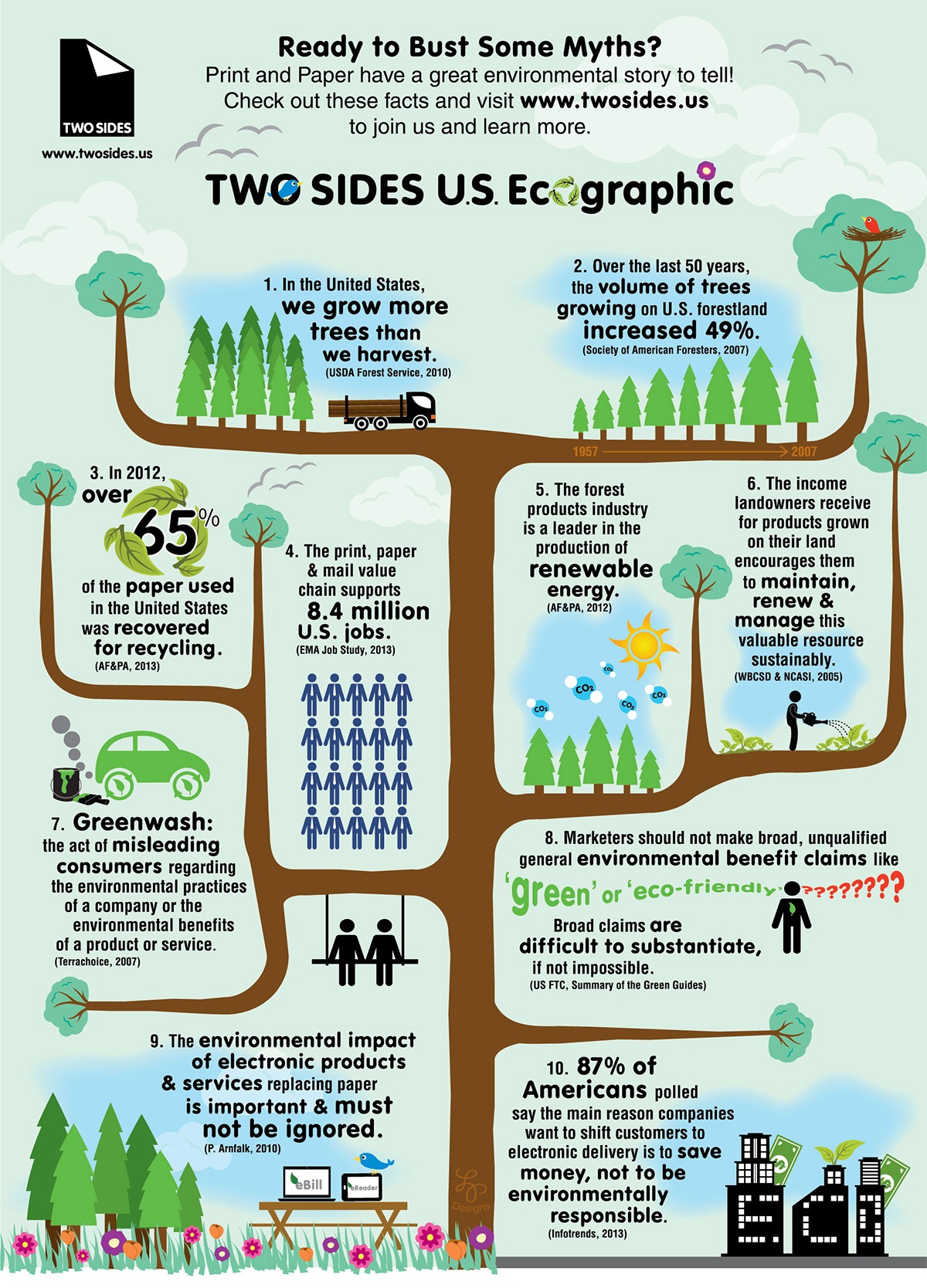There are many misconceptions about the environmental impact of print on paper. Since printers and their suppliers use natural resources—trees—as a substrate for their products, many people think that by forgoing printing, they are saving trees and making the right choice for the environment. However, the exact opposite is true.
Print Values Trees
Much paper now comes from sustainable forests. These sustainable forests are essentially "tree farms," where trees are grown as a crop, just like broccoli or wheat. When these trees are harvested, new stocks are planted. Print gives landowners a financial incentive to renew forests rather than convert them for other uses, such as agriculture or development.[1] In fact, a number of investigators have suggested that efforts to protect forests primarily through non-market forces could, in fact, results in forest loss.[2]
Print Uses “Waste”
Overall, one-third of the fiber used to make paper comes from wood chips and sawmill scraps; another third comes from recycled paper.[3]In the United States, 76% of paper and paperboard mills use at least some recovered material in their manufacturing process in 2011, while 113 paper mills used recovered fiber exclusively.[4]
Print is Recycled
But that is not the complete story. Print on paper is recycled and reused. In 2015, a record-high 66.8% of paper used in the United States was recycled. This was aided in part by more deliberate curbside and drop-off collection systems.[5] Recycled paper is used to make everything from construction products to consumer goods.
Print is Responsible
Just 11% of the world's forests are used for paper, and in the U.S. the wood used to produce paper increasingly comes from certified forests.[6]The Forest Steward Council (FSC) and Sustainable Forest Initiative (SFI) track fiber content from certified lands through production and manufacturing to the end product.
From sustainable forests to the renewable nature of trees and the recyclability of paper, the print and paper industries have a positive environmental story to tell—one in which print on paper and healthy forests thrive hand-in-hand.

[1] Edward L. Glaeser, Professor of Economics, Harvard University, "A Road Map for Environmentalism," Boston Globe.
[2]Dovetail Partners, Tree-Free Paper: A Path to Saving Trees and Forests?, revised August 19, 2014.
[3]U.S. EPA, Office of Solid Waste, 2014.
[4]American Forest and Paper Association, "Fun Facts," 2014.
[5]Paper Recycles, Paper & Paperboard Recovery Statistics
[6]International Paper, Down to Earth, "Is it Worth Printing? "

